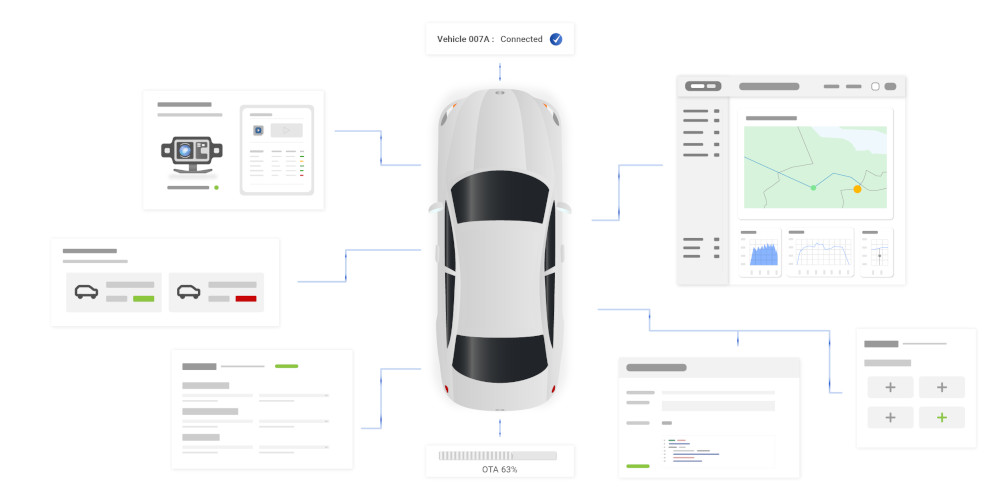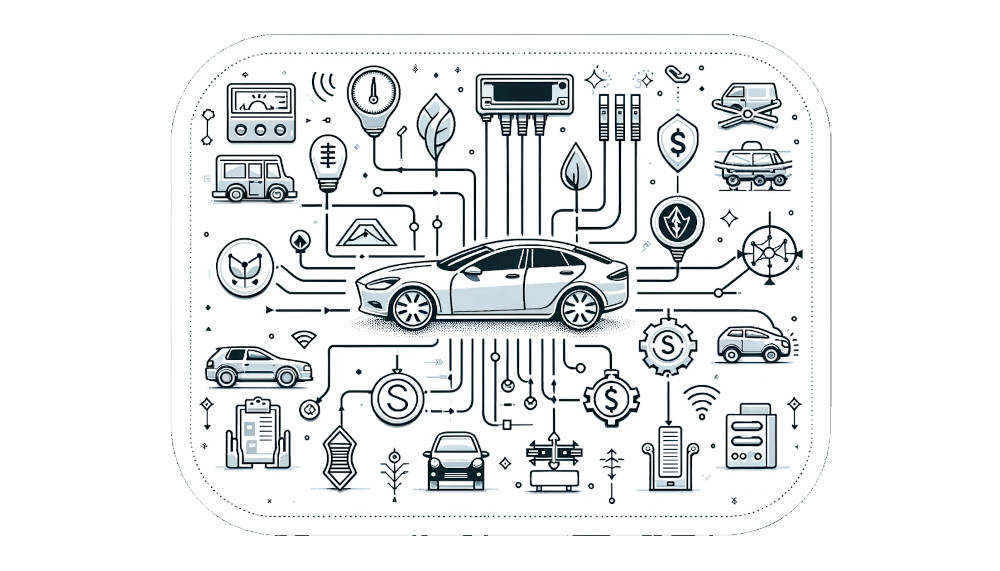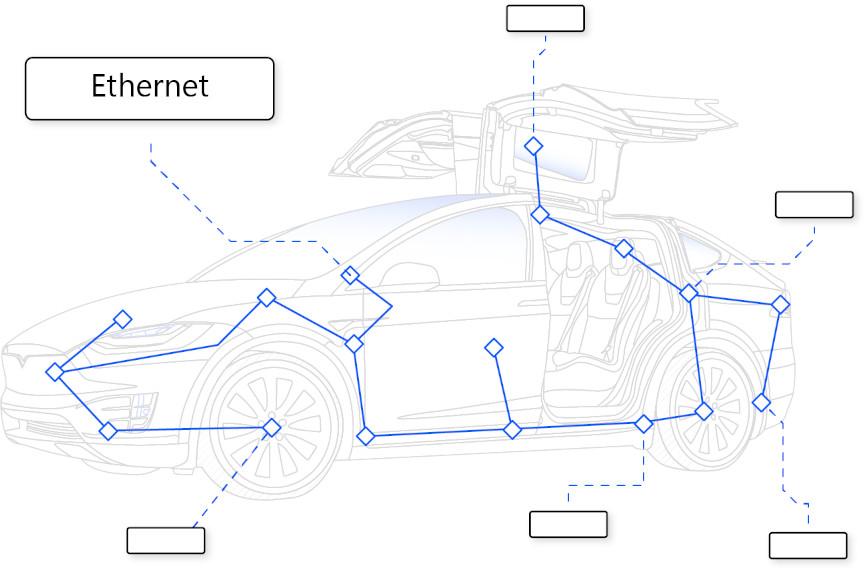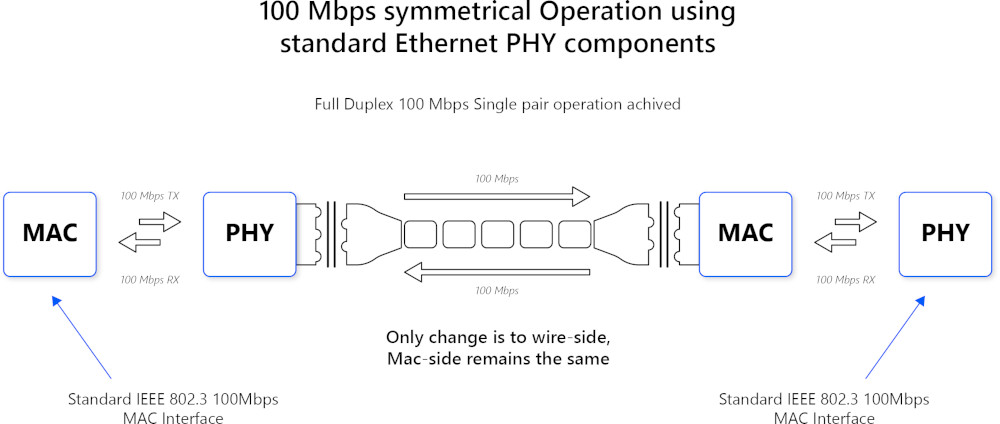Automotive Ethernet is a revolutionary technology reshaping vehicle communication networks. Unlike traditional automotive wiring systems, it offers high-speed data transfer, significantly enhancing the performance and efficiency of in-car systems. Automotive Ethernet is able to provide up to 1 Gbps speed, which is crucial for supporting advanced features like autonomous driving, infotainment, and telematics. This technology marks a significant step forward in the evolution of automotive connectivity.
The evolution of automotive technology is accelerating, turning what was once seen as science fiction into tangible, intelligent car features. In recent years, the industry has seen a surge in innovations, making it a challenge to keep pace with the rapid advancements.
With the rise of intelligent cars, there's a marked increase in the complexity and interconnectivity of car software. This trend is particularly notable in electric vehicles, which are evolving to include more advanced and intelligent systems.
To support the burgeoning number of sensors, controllers, and interfaces in these sophisticated vehicles, networks must evolve to be faster and more reliable.
What is Automotive Ethernet?
In simple terms, automotive ethernet is a wired network that connects different pars of a car together, efficiently.
Automotive Ethernet is a specialized form of Ethernet network adapted for vehicles, enabling high-speed data transfer between different car components. It is designed to meet automotive-specific requirements like electromagnetic compatibility, and uses advanced Phy transceivers to reduce cable costs. This system allows for higher baud rates compared to traditional automotive networks and facilitates the integration of Internet Protocol (IP) technologies, enhancing functional safety and cybersecurity.
In the automotive industry, Automotive Ethernet meets crucial standards for electrical emissions, susceptibility, and network management, including bandwidth and latency. As connected cars demand increasingly faster data transfer, Automotive Ethernet is evolving rapidly to meet these needs. It works in conjunction with traditional buses like CAN, CAN-FD, LIN, and others, combining their strengths to meet changing performance requirements. Managing higher volumes and speeds of data is essential for modern and future vehicles to support communication, safety, convenience, and electrification features.
This increasing connectivity is transforming vehicles into "computers on wheels." Automotive Ethernet, offering higher bandwidth and flexibility, is predicted to gradually replace the traditional CAN bus network backbone, aligning more closely with the evolving demands of automotive technology.

Ethernet vs. Automotive Ethernet: Understand the Differences
Standard Ethernet, widely used in LAN and WAN since its 1980 launch and 1983 IEEE standardization, was initially unsuitable for automotive applications due to its susceptibility to noise and interference. Automotive Ethernet, however, has been specifically tailored for vehicle use, addressing these challenges.
The key difference between standard Ethernet and Automotive Ethernet lies in their physical layers. Automotive Ethernet utilizes single twisted pair cables for full duplex communication, which are lighter and can be either shielded or unshielded, unlike the dual twisted pair cables in standard Ethernet. This adaptation results in a 30% weight reduction compared to traditional CAN/LIN harnesses and is less prone to automotive environmental challenges.
Automotive Ethernet versions like 100Base-T1 and 1000Base-T1 function as switched networks, optimized for vehicular data transfer needs. 10Base-T1S, another variant, operates as a multi-drop bus, similar to CAN networks. These features are crucial for meeting the increased bandwidth and reduced latency requirements of modern vehicles.
Different from Diagnostics over IP (DoIP), which uses standard 100Base-TX Ethernet for connections to the SAE J1962 diagnostic socket in vehicles, Automotive Ethernet is a more specialized solution. It caters to the rigorous demands of in-vehicle communication networks, paving the way for enhanced connectivity and advanced vehicle functionalities.
How AutoPi Can Help Your Business Make the Most of Automotive Ethernet
Automotive Ethernet is really starting to shake things up, and AutoPi is here to help you take full advantage of it. With the AutoPi TMU CM4 and AutoPi CAN FD Pro, both with gigabit Ethernet, your vehicles will be able to communicate faster and more reliable than they ever did before.
This means smoother operations, quicker data transfers, and fewer headaches for your team. Whether you're managing a fleet or offering connected vehicle services, AutoPi’s technology has your back.
This means less downtime and better insights into how your fleet is performing, from vehicle health to driving behaviors, all in real time. Whether you’re running a fleet of trucks, offering car-sharing services, or providing connected in-car experiences, these devices will take your operations to the next level.
Today’s vehicles are smarter, and your business needs to keep up with that. AutoPi’s gigabit Ethernet-powered devices give you the tools you need to stay ahead—track performance, cut maintenance costs, and boost productivity. So if you want to future-proof your business and stay connected in a rapidly evolving world, AutoPi’s got your back.
Key Features and Specifications of Automotive Ethernet
-
Point-to-Point Network: Automotive Ethernet connects nodes directly, differing from bus technology.
-
Switch Integration: Enables multiple ECUs to communicate and direct traffic by physical addresses.
-
Standards (100Base-T1 & 1000Base-T1): Specifically designed for automotive networking requirements.
Cabling: 100Base-T1 uses unshielded single twisted-pair for 100 Mbps data, supporting Audio Video Bridging (AVB).
Audio Video Bridging (AVB): Standards for better synchronization, reduced latency, and reliability in Ethernet networks.
-
CAN/CAN-FD Limitations: Inadequate for audio/video applications in cars due to 1 to 8 Mbps capacity.
-
Cost-Effectiveness: Automotive Ethernet's initial base rate of 100 Mbps is more economical than other protocols.
Energy Efficiency: Lighter cables reduce energy use, cutting connectivity costs by up to 80% and weight by 30%.
Topologies in Automotive: Point-to-point is commonly used, alongside star topology for Ethernet applications.
-
Star Topology: All nodes or ECUs connect to a central switch, often used in Ethernet automotive applications.
-
Ring Architecture: Employed for safety-critical applications, contrasting with star topology in infotainment systems.

The Increasing Influence of Electronics and Computers in Cars Over Time
The car has evolved from a mere assembly of basic systems into a vital part of our interconnected world. This transformation has been driven by the increasing influence of electronics and computers in automobiles over time. Vehicles today are not just modes of transport; they are sophisticated, connected hubs integrated into the broader network of our daily lives.
As we delve into the realm of automotive networking, several technologies illustrate this evolution:
-
Advanced Infotainment Systems: Integrating entertainment, navigation, and connectivity for an enhanced in-car experience.
-
Autonomous Driving Capabilities: Utilizing sensors, AI, and networked computers for safer, self-driving cars.
-
Telematics: Offering real-time monitoring, diagnostics, and communication features.
-
Vehicle-to-Everything (V2X) Communication: Enabling cars to communicate with other vehicles, infrastructure, and devices.
-
Electric Vehicle (EV) Systems: Incorporating smart electronics for battery management and efficient energy use.
-
Enhanced Safety Features: Leveraging electronic systems for features like automatic braking and lane assist.
-
Remote Vehicle Control: Allowing users to interact with their cars via smartphones or other devices.
-
Eco-Friendly Innovations: Utilizing electronics to reduce emissions and increase fuel efficiency.

Automotive Ethernet Protocol: Bandwidth Capabilities
The Automotive Ethernet Protocol has revolutionized vehicle network capabilities with its diverse bandwidth options, catering to various data transmission needs in modern vehicles. Initially, Broadcom's BroadR-Reach, which later evolved into the IEEE 100Base-T1 standard under the OPEN Alliance SIG, marked the protocol's entry into the automotive world with a baud rate of 100 Mbits/sec. This speed significantly enhanced in-car network efficiency, enabling faster data communication essential for contemporary vehicle systems.
The protocol's bandwidth capabilities further expanded with the introduction of 1000Base-T1, offering a substantial increase to 1 Gbit/sec. This upgrade in the Automotive Ethernet Protocol allowed for more data-intensive applications, such as high-definition video streaming and complex driver assistance technologies, to be integrated seamlessly into vehicles.
In addition to these high-speed options, the protocol also includes 10Base-T1S, designed as a cost-effective alternative with a 10 Mbits/sec rate. This particular variant of the Automotive Ethernet Protocol provides a viable option for systems that don't require high-speed data transfer but still benefit from the reliability and integration ease of Ethernet technology, making it an excellent alternative to FlexRay and high baud rate CAN bus systems.

A key advantage of the protocol is its ability to support multiple baud rates within the same vehicle architecture. This feature simplifies the integration and scalability of various in-car systems, avoiding the complexities of gatewaying different protocols. As a result, the Automotive Ethernet Protocol stands out for its flexibility and adaptability, ensuring that vehicle electronic and electrical architectures can evolve easily over their lifespan to keep pace with advancing automotive technologies.
Evolution of Automotive Ethernet Through the Decades
Automotive Ethernet represents a major leap in vehicle communication technology. Starting with the CAN bus in the 1990s for basic vehicle functions, advancements like LVDS, LIN, FlexRay, and CAN FD followed, increasing data speeds to 5 Mbps for more complex features.
Today's smart vehicles, equipped with advanced systems like ADAS and high-bandwidth sensors such as LIDAR, require significantly more data capacity. Automotive Ethernet meets this need, supporting over 70 Mbps per sensor and ensuring real-time data processing for efficient vehicle operation. This shift to Automotive Ethernet, driven by the demands of modern vehicle technologies, highlights its critical role in the evolution of automotive communication systems.
-
1990s: The CAN bus system debuts, laying the groundwork for vehicle network communication.
-
Early 2000s: Developments in automotive network protocols like LVDS, LIN, and FlexRay emerge.
-
2010s: Rising demand for higher bandwidth in vehicles due to advanced systems like ADAS.
-
Late 2010s: Introduction of Automotive Ethernet, offering significantly higher data speeds and efficiency.
-
Today: Automotive Ethernet becomes a standard in modern vehicles, supporting complex systems and high-speed data needs.






